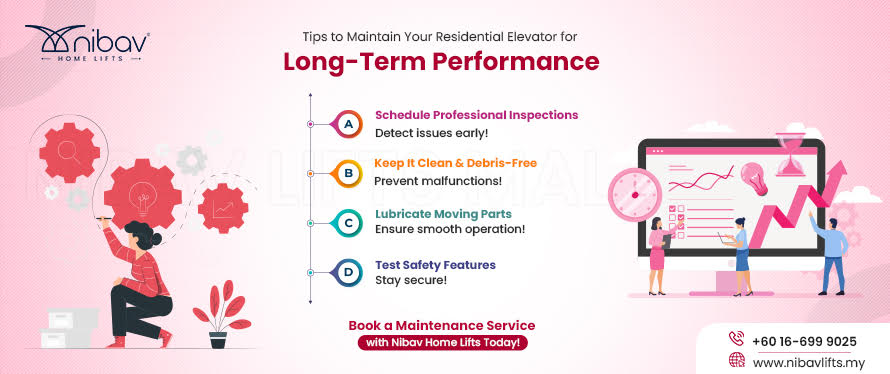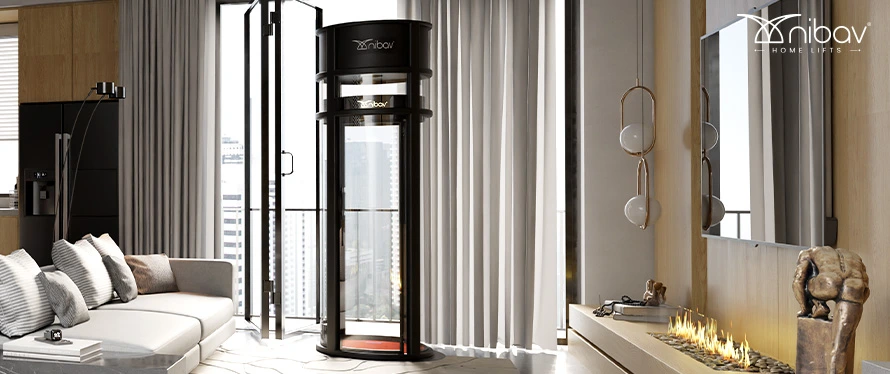Introduction
Residential elevators are increasingly essential for many customers, especially those looking to increase flexibility, security, and convenience to their homes. Regular lift maintenance, on another hand, is essential to ensure that your investment maintains in good condition and services you efficiently for years to come. Regular servicing not only extends the lifespan of your elevator, but also ensures the protection of its customers.
In this post, we will discuss the top maintenance standards for your residential elevator to assist you take care of its long-term functionality. These recommendations are intended to be realistic, simple to implement, and vital for everyone who owns a residence lift.
1. Schedule regular professional inspections.

Importance of Professional Inspections
Whichever of the most critical measures in keeping your residential elevator is to schedule frequent expert maintenance. While it may be tempting to depend exclusively on your own experiences, an experienced technician may detect potential errors that may not seem immediately obvious. Regular checks assist in spotting signs of age, and guaranteeing your elevator maintains to operate effortlessly and safely.
The frequency of inspections
It is typically suggested that you get your residential elevator examined at least once every year. However, the incidence may vary based on the model and usage. High-traffic elevators and older versions may need more regular maintenance. During these inspections, an experienced technician will examine all important factors, including the motor, cables, and safety measures, to ensure they are in functioning condition.
2. Keep the elevator clean and debris-free.
maintaining a clean environment
Obstructions, dust, and material may build up in the elevator shaft and other moving components, resulting in potential defects or extra wear. Regular cleaning is required to keep these particles from impairing an elevator’s functioning. Simple things like cleaning down the inside, taking over the floor, and making sure the doors are clear of barriers may help to keep your elevator in good working order.
Clean the elevator shaft.
While maintaining the cabin clean is critical, so is maintaining the elevator shaft clear of material. Obtained material may interfere with the elevator’s seamless operation and give impact over time. Professional elevator shafts maintenance should be performed on a regular basis to ensure the system’s functionality.
3. Ensure proper lubrication of moving parts.
The Function of Lubrication in Elevator Maintenance
Lubrication of moving components is essential for the proper functioning of your residential elevator. Lubricants decrease contact between metal components, preventing breakdowns and maintaining the elevator runs in silence and effectively. Without necessary maintenance, elevator features would wear out more quickly creating major replacements.
How Often Should Lubrication Be Done?
Lubrication should be done following the company’s instructions, which are usually found in the operator’s guide. However, it is best to have the lubricant examined with each expert checkup. A professional technician can guarantee that an appropriate grease is utilized and that all relevant components are lubricated correctly.
4. Regularly test the safety features.
Importance of Safety Features Testing
Residential elevators are supplied with a variety of safety mechanisms intended to safeguard users in the event of an emergency. These include emergency brakes, door sensors, and alarms. Regular inspection of these safety measures is essential to verify that they work properly when required.
How to Conduct Safety Feature Testing
While certain safety checks may be handled by the homeowner, such as determining if the door sensors stop the elevator when a problem occurs, others must be done by an authorized technician. During a professional verification, the technician will check all safety features, such as emergency braking systems and battery backup sources, to verify they are in good condition.
5. Address repairs immediately.
Risks of Delaying Repairs
Even small difficulties with your residential elevator may quickly roll into serious concerns if not handled immediately. Delays in maintenance may result in further degeneration, greater expenses for repair, and even safety concerns. To prevent compromising the elevator’s efficiency, any defects must be fixed as quickly as possible.
Signs That Repairs Are Required
Unusual noises, slower performance, snack actions, or doors that do not open or shut correctly are common indicators that your elevator needs to be fixed. If you observe any of these concerns, you should call a qualified professional right away. Quick action may avoid complications and keep your elevator safe and working.
Conclusion
Maintaining your residential elevator secures not just its dependability, but additionally the safety of those who use it. Follow these top maintenance guidelines to take advantage of the peace of mind which comes with a maintained properly, dependable house lift: schedule periodic checks, keep the elevator clean, ensure adequate lubrication, test safety features, and handle faults as soon as possible.
At Nibav Home Lifts, we acknowledge the need of maintaining your home elevator in excellent condition. Our team of highly trained professionals is right here to help solve every one of your maintenance needs, to make sure the elevator stands a safe and effective feature of your house.
Contact Nibav Home Lifts immediately to set up your next expert maintenance or to learn more about our extensive maintenance options. Allow us to assist you with keeping your home elevator operating at peak efficiency for years to come.




